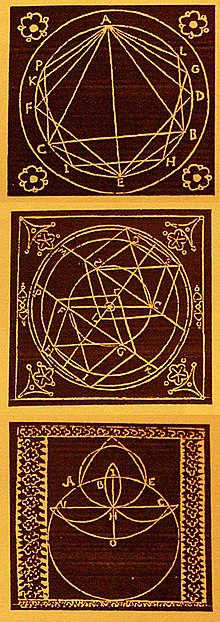
Back Kuns van geheue Afrikaans فن الذاكرة Arabic Mnemotècnia Catalan Hukommelseskunst Danish Mnemotechnik German Mnemoteknia Basque Muistitekniikka Finnish Mnémotechnique French Mnemotehnika Croatian Mnemotechnika Hungarian

The art of memory (Latin: ars memoriae) is any of a number of loosely associated mnemonic principles and techniques used to organize memory impressions, improve recall, and assist in the combination and 'invention' of ideas. An alternative term is "Ars Memorativa" which is also translated as "art of memory" although its more literal meaning is "Memorative Art". It is also referred to as mnemotechnics.[1] It is an 'art' in the Aristotelian sense, which is to say a method or set of prescriptions that adds order and discipline to the pragmatic, natural activities of human beings.[2] It has existed as a recognized group of principles and techniques since at least as early as the middle of the first millennium BCE,[3] and was usually associated with training in rhetoric or logic, but variants of the art were employed in other contexts, particularly the religious and the magical.
Techniques commonly employed in the art include the association of emotionally striking memory images within visualized locations, the chaining or association of groups of images, the association of images with schematic graphics or notae ("signs, markings, figures" in Latin), and the association of text with images. Any or all of these techniques were often used in combination with the contemplation or study of architecture, books, sculpture and painting, which were seen by practitioners of the art of memory as externalizations of internal memory images and/or organization.
Because of the variety of principles and techniques, and their various applications, some researchers refer to "the arts of memory", rather than to a single art.[2]
- ^ In her general introduction to the subject (The Art of Memory, 1966, p4) Frances Yates suggests that "it may be misleading to dismiss it with the label 'mnemotechnics'" and "The word 'mnemotechnics' hardly conveys what the artificial memory of Cicero may have been like". Furthermore, "mnemotechnics", etymologically speaking, emphasizes practical application, whereas the art of memory certainly includes general principles and a certain degree of 'theory'.
- ^ a b Carruthers 1990, p. 123
- ^ Simonedes of Ceos, the poet credited by the ancients with the discovery of fundamental principles of this art, was active around 500 BCE, and in any case a fragment known as the Dialexis, which is dated to about 400 BCE contains a short section on memory which outlines features known to be central to the fully developed classical art. Frances A. Yates, The Art of Memory, University of Chicago Press, 1966, pp 27-30. The Oxford Classical Dictionary, Third Edition, Ed. Hornblower and Spawforth, 1999, p1409.
© MMXXIII Rich X Search. We shall prevail. All rights reserved. Rich X Search